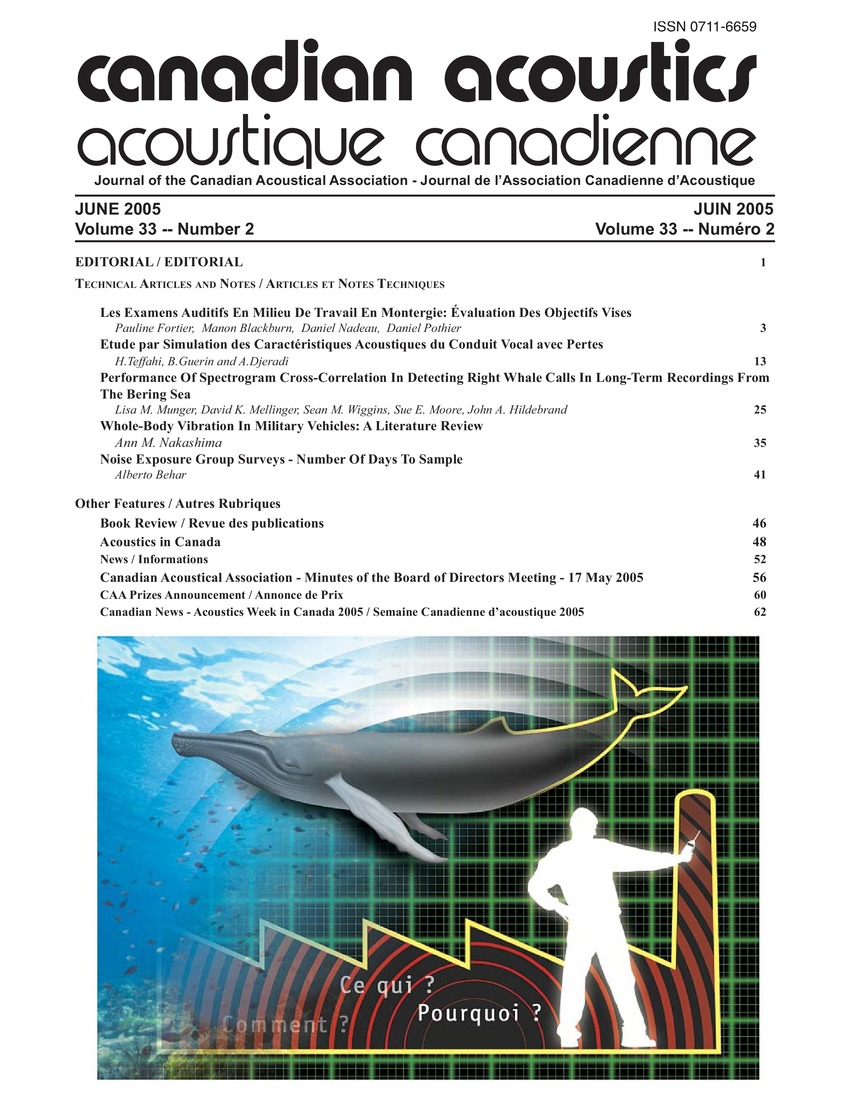Whole-body vibration in military vehicles: A literature review
Keywords:
Audition, Cognitive systems, Noise abatement, Personnel, Radio communication, Technical presentations, Vibration control, Complex cognitive tasks, Human performance, Military personnel, Whole-body vibrationAbstract
Military personnel are exposed to high levels of whole-body vibration in armoured vehicles. Since command and control operations are likely to become more mobile in the future, it is of interest to understand the effects of whole-body vibration exposure on human performance and communication. This paper is a review of the effects of whole-body vibration on hearing and cognitive performance. Exposure to vibration has been shown to exacerbate noise-induced hearing loss, which may have implications for radio communication and speech understanding. Vibration does not appear to affect performance for simple cognitive tasks, but it may degrade performance on more complex cognitive tasks, particularly if the exposure is of long duration. This could be of key importance in a command and control situation, in which operators are under high cognitive load. The severity of vibration that is experienced in armoured vehicles makes it difficult to perform realistic experiments in the laboratory, meaning that future studies of its effects on cognitive performance and communication will likely have to be performed in the field.Additional Files
Published
How to Cite
Issue
Section
License
Author Licensing Addendum
This Licensing Addendum ("Addendum") is entered into between the undersigned Author(s) and Canadian Acoustics journal published by the Canadian Acoustical Association (hereinafter referred to as the "Publisher"). The Author(s) and the Publisher agree as follows:
-
Retained Rights: The Author(s) retain(s) the following rights:
- The right to reproduce, distribute, and publicly display the Work on the Author's personal website or the website of the Author's institution.
- The right to use the Work in the Author's teaching activities and presentations.
- The right to include the Work in a compilation for the Author's personal use, not for sale.
-
Grant of License: The Author(s) grant(s) to the Publisher a worldwide exclusive license to publish, reproduce, distribute, and display the Work in Canadian Acoustics and any other formats and media deemed appropriate by the Publisher.
-
Attribution: The Publisher agrees to include proper attribution to the Author(s) in all publications and reproductions of the Work.
-
No Conflict: This Addendum is intended to be in harmony with, and not in conflict with, the terms and conditions of the original agreement entered into between the Author(s) and the Publisher.
-
Copyright Clause: Copyright on articles is held by the Author(s). The corresponding Author has the right to grant on behalf of all Authors and does grant on behalf of all Authors, a worldwide exclusive license to the Publisher and its licensees in perpetuity, in all forms, formats, and media (whether known now or created in the future), including but not limited to the rights to publish, reproduce, distribute, display, store, translate, create adaptations, reprints, include within collections, and create summaries, extracts, and/or abstracts of the Contribution.


